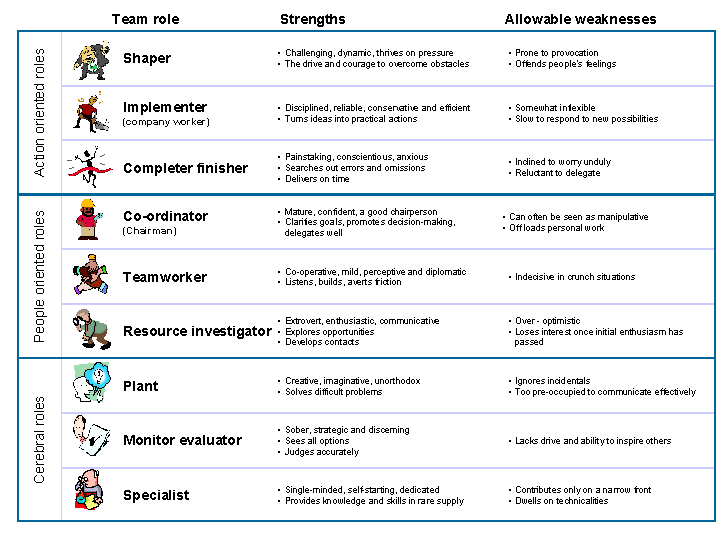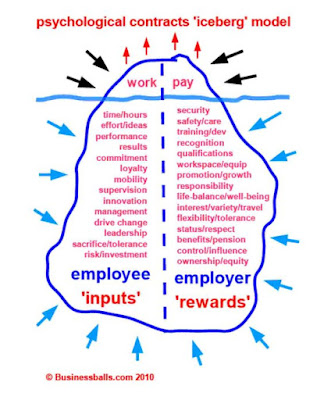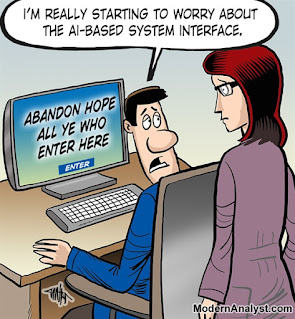Posts
Featured Post
Team Roles/Group Roles (Belbin) within the project and Four classes of culture
- Get link
- Other Apps
By
Rishoo Mittal
-

Team Roles/Group Roles within the project Team workers are the people who ensure the team remains united. They work toward resolving conflict or issues affecting the team’s dynamics. Team workers are very supportive of other team members and are thus popular within the team. Specialists are those with expert knowledge in a particular area comprise of the specialist role. Their contribution to the team is limited only to their area of expertise. Their priority is in maintaining their professional standards. Though they show great pride in their area of expertise, they show little or no interest in the expertise of others. Plants are innovative members of the team. They come up with creative ideas that help the team in solving the problem. Plants are introverts in nature and possess poor communication skills. Plants prefer to work alone. They react well to praise but are greatly affected by negative criticism. Belbin Team Roles Four Classes of Culture Power culture
Psychological contract in today's business
- Get link
- Other Apps
By
Rishoo Mittal
-

Psychological contract (level of individual and organization): It is a form of social contract. It goes beyond work and salaries. It is implicit i.e. it is not a written contract. The working relationship is rooted in expectations, values, perceptions. It is based on social exchange theory. It means every relationship in society is based on expectations i.e. give and take. It is a Hypothetical contract. The psychological contract in an organization is social exchange interaction between employees. The psychological contract is complex. It’s mainly on building relationships. It’s about how we are treated and what we put into the job. It has to do with rewards and rights. The trade that can be seen in this case are Respect, trust, compassion, empathy. A psychological contract has the dynamic quality and it has an emotional and social impact. Types of psychological contract: Transactional: economic exchange. There is no expectation the employer will invest in your career. Relational contr
Difference in Verification and Validation of requirement? : Requirement Traceability Matrix?
- Get link
- Other Apps
By
Rishoo Mittal
-

The difference in Verification and Validation of requirements? Verification of requirement – a requirement meets the quality standard, fits the purpose, it is clear, consistent, complete, testable, unambiguous, understandable to stakeholders. Validation of requirement – requirement is aligned to the business need, goal, outcome, if it supports the delivery of needed value. Requirement Traceability Matrix? The technique used to trace the requirements. It ensures that all business requirements are covered. It helps in backward and forward traceability. Helps in faster impact analysis and reliable assessment for ensuring business requirement coverage. Requirement Traceability Matrix
Business, functional and non-functional requirement: What is Business Rule?
- Get link
- Other Apps
By
Rishoo Mittal
-

Business Requirement – The needs, goals, objectives, and outcomes of the business are presented. Majorly it is a “What” approach i.e. What does the sales department need? It needs a digital Channel such that customers can book tickets online. Functional Requirement – The Way to achieve the business requirement is described, i.e. how the business requirement can be achieved – The system should display available seats for movie show, The system should allow customers to select available seats. Non-Functional Requirement consists of – · Performance: The time it takes for the system to load · Security: How secured is the system · Reliability: How reliable is the system · Usability: How easy it is to use the system · Maintainability · Portability Ex: The system should be able to respond within 2 seconds of the user’s input (performance). Business Requirement What is Business Rule? A business rule is a criterio
Phenomenons related to individual performance
- Get link
- Other Apps
By
Rishoo Mittal
-

Individual performance Social Loafing (Ringelmann effect) is a concept that describes that people are prone to put in less effort in a team rather than when working individually. Ringelmann made an experiment with a large group of people pulling the rope. The bigger the group, the less effort every participant will put in. There are many reasons to lack motivation while working in a team: Social Loafing Free-rider-effect – some people may just lay back knowing that others will do the work, hiding back their ideas and actions thinking that others are stronger and better and can get the job done better. Having one free-rider in the team may affect the motivation of all the members. If this happens repeatedly, others can get a feel of being exploited and unsatisfied. The Sucker Effect – when one of the team members refuses to do the work and leaves from the team. He leaves the team because he doesn’t want to be the sucker. How to avoid social loafing: - Limit the group
System interface questions for requirement elicitation - Business analyst/System analyst
- Get link
- Other Apps
By
Rishoo Mittal
-

Generic overview of questions to ask for the specification of an interface (between a system A and a system B) – Business Analyst/System Analyst Ø Business Requirement Questions 1. What kind of interface do you need unidirectional or bidirectional Unidirectional interface: The data will be sent in one direction by the sender to the receiver. Ex: System A sends data to System B and the receiver System B will read, process, write and store the data. In the case of bidirectional the systems are connected such that data can be sent and received by both. Ex: System A and System B can both read, process, write, and store the data within each other. 2. What do you want to achieve with this interface? The business needs this interface to help to fulfill and provide support. 3. The Actions Needed by you in the interface? The data is required to be Deleted (DELETE), Overridden and created (PUT), Overridden, created, appended (POST) Read the Data (GET)